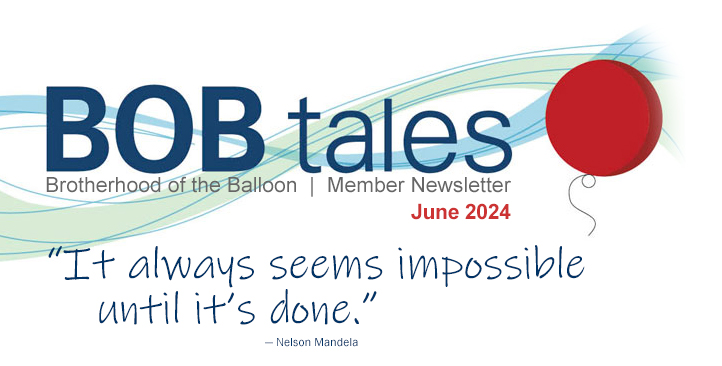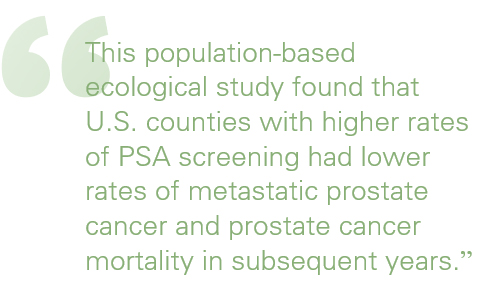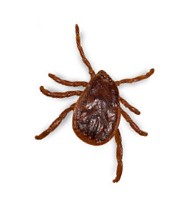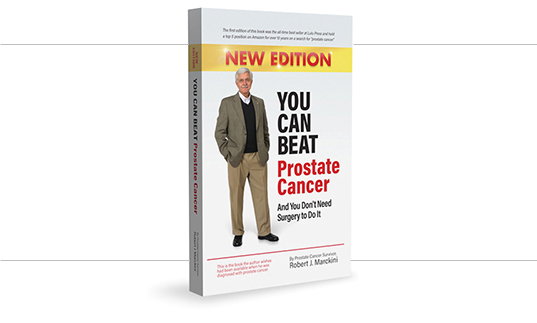
Dear Members (a note from Deb Hickey):
After a four-year hiatus from the gym, thanks to COVID-19 and an intense relationship with my couch, I decided it’s time to get back into shape.
Last week, I reluctantly drove to the gym, my least favorite place in the world. I signed up for membership (since mine had expired), and decided to take a class because I’d rather suffer with company. Plus, the thought of running on a treadmill is about as exciting as watching grass grow in slow motion.
Somehow, I ended up in a step aerobics class. If you’ve never seen a step aerobics class, please let me explain. Step aerobics is like trying to dance through a hurricane while solving a Rubik’s Cube – it’s ridiculously fast-paced, especially if the instructor is under 30. By the end of the class, I was a sweaty, panting mess.
But as I hobbled out of the gym, I couldn’t help but feel a spark of pride for bravely venturing back into the realm of fitness and emerging relatively unscathed.
Speaking of bravely venturing into the realm of fitness, this month, we’re re-running the story of Roger Wright in our Final Thought section. We first shared his story eight years ago, so we know many of our members haven’t seen it. Roger’s story is a testament to the power of hard work, commitment, and the human spirit. We think you’ll be inspired by his story of transformation and triumph.
Also in this issue of BOB Tales, we report on evidence that shows PSA screening is still your first line of defense in finding prostate cancer. And there’s a groundbreaking new urine test that’s incredibly effective at detecting high-grade cancers that are often missed by other clinical testing. And lastly in the News section, we discuss how an MRI of the prostate combined with the PSA blood test can help determine if prostate cancer is likely to spread.
In our Health section we give you eight tips for keeping ticks away – especially during the summer months. We also include five foods that slow down the effects of aging. I read that one thoroughly.
And as always, there is a lot more!
We welcome any suggestions you have on improving the value of the BOB Tales to our members. Please send your feedback to [email protected].
Deb Hickey
P.S. You may think I’m lying about retrieving the mail and finding the denial reversal letter while I was on the phone with the infusion Pharmacy Lady, but it’s true!
*To print the BOB Tales newsletter or view the newsletter with a larger font size, click here for the PDF file.

- U.S. County-Level Study Shows Life-Saving Impact of PSA Screening
- New Urine Test Detects Higher-Grade Cancers
- Prostate MRI + Blood Test May Reduce Biopsies
- Flashback: Try This for a Healthier Colon
- Loma Linda University Health Launches Major New Cancer Initiative
- 8 Tips for Tick Prevention
- 5 Foods to Slow Down the Effects of Aging

U.S. County-Level Study Shows Life-Saving Impact of PSA Screening
A new study of U.S. counties found that higher rates of prostate-specific antigen (PSA) screening are linked to lower incidences of advanced or metastatic prostate cancer and reduced prostate cancer mortality rates in subsequent years.
USPSTF Recommendation Led to Unfortunate Results
In 2012, the U.S. Preventive Services Task Force (USPSTF) caused a significant stir by strongly recommending against prostate cancer screening. They argued that PSA testing led to over-treatment and harmed men who might otherwise have lived normal lives without experiencing prostate cancer symptoms.
Following this recommendation, many physicians ceased screening their patients. Our members and many in the medical community were outraged. We were deeply concerned that discontinuing PSA testing would result in an increased number of undiagnosed, aggressive prostate cancers, which if left untreated, could lead to metastasis and death.
In 2017, there was a partial reversal of the 2012 panel’s recommendation, simply suggesting that 55-69-year-old men speak with their doctors about the advisability of getting a PSA test. However, the USPSTF still recommended against PSA testing for men 70 and older. There was also no mention of advances in use of biomarkers and genomic testing that could greatly reduce the chance of over-diagnosis and over-treatment.
And, as we predicted, after the USPSTF’s initial recommendation, there was a significant increase in the number of older men reported to have distant metastases at diagnosis, as reported in JAMA Oncology. The increase rate was lower for those aged 50-74.
Many prostate cancer experts believe that once prostate cancer metastasizes, it may be manageable but it’s not curable. At the very least, treatment after metastasis is much more expensive and generally more onerous than when it’s detected early and still organ-confined. So, the USPSTF recommendations resulted in many men experiencing tragic consequences.
New Study Shows Benefits of PSA Screening
Clinicians continue to debate the benefits and harms of PSA screening. To help clarify the value of PSA screening, researchers assessed the association between PSA screening rates by U.S. county and the incidence of metastatic prostate cancer and prostate cancer mortality by county.
They analyzed data from 63.4 million men aged 40-79 across 3,143 counties from 2004 to 2012. The researchers found that a 10 percent increase in PSA screening during this period was associated with a 14 percent decrease in advanced prostate cancer cases from 2015 to 2019 and a 10 percent decrease in prostate cancer deaths from 2016 to 2020.

The study also highlighted a significant connection between PSA testing rates and the number of men receiving prostate cancer treatment. For instance, in 1997, an additional 4,894 men underwent prostate biopsies and 1,597 more men received prostate cancer treatment per 100,000 men screened with a PSA test.
“This population-based ecological study found that U.S. counties with higher rates of PSA screening had lower rates of metastatic prostate cancer and prostate cancer mortality in subsequent years,” the researchers concluded.
The choice between screening and surveillance remains pivotal, empowering individuals to ascertain the nature of their cancer and tailor their treatment accordingly. Thus, while the concerns of overtreatment persist, the evolving paradigm suggests that routine screening should not be dismissed outright, underscoring the importance of informed decision-making by physicians as well as patients.
New Urine Test Detects Higher-Grade Cancers
A urine test – the MyProstateScore 2.0 (MPS2) – measures 18 genes associated with prostate cancer and provides higher accuracy for detecting clinically significant cancers than PSA and other existing biomarker tests, according to a new study published in JAMA Oncology.

“In nearly 800 patients with an elevated PSA level, the new test could rule out the presence of clinically significant prostate cancer with remarkable accuracy. This allows patients to avoid more burdensome and invasive tests, like MRI and prostate biopsy, with great confidence that we are not missing something,” said Jeffrey Tosoian, MD, assistant professor of urology and director of Translational Cancer Research at Vanderbilt University Medical Center, and author of the study.
Prostate cancer is the most common cancer and the second-leading cause of cancer death among men in the U.S. Although the PSA test is widely used for screening, it can be elevated in a significant proportion of men without cancer. This could lead to unnecessary biopsies. So, for those who have an elevated PSA, there’s a need for a second-line test to better identify which men truly need a biopsy. The MPS2 test was developed for this purpose; it detects higher-grade cancers that require treatment.
While multiparametric magnetic resonance imaging (mpMRI) is another second-line test, it can be subjective and isn’t always available. This study suggests MPS2 is effective in ruling out the need for biopsies and mpMRI.
In a study of 743 men, MPS2 reduced unnecessary biopsies by 35 to 42 percent, compared to 15 to 30 percent for other tests, without missing significant cancers. This improvement was greater in men with a previous negative biopsy.
Note that only 13 percent of participants were African American, so further research in diverse populations is needed.
Prostate MRI + Blood Test May Reduce Biopsies
After close examination of data from several studies, researchers have determined that MRI of the prostate combined with the PSA blood test can help determine if prostate cancer is aggressive and likely to spread.
This new approach to diagnosing clinically significant prostate cancer allows patients to avoid unnecessary biopsies by integrating MRI of the prostate findings with PSA density. The method also decreases overall healthcare costs. Results are published in JAMA Network Open.
Tamás Fazekas, M.D., from the Medical University of Vienna, along with his colleagues, conducted a systematic review to evaluate the diagnostic effectiveness of screening methods that combine MRI with targeted biopsy against those that use PSA-based screening with systematic biopsy approaches.
Data were included from 12 studies involving more than 80,000 men. Researchers found that incorporating the MRI pathway increased the likelihood of detecting clinically significant prostate cancer (csPCa) compared to standard PSA-based screening. Additionally, there were lower odds of performing biopsies and detecting insignificant cancers when focusing on MRI plus PSA. There were no significant differences in csPCa detection rates between MRI-only and PSA-only screening methods.
“We found that MRI mitigates pitfalls of standard PSA-based strategies, as it can be associated with fewer unnecessary biopsies and helps to avoid the detection of insignificant cancers while not comprising significant disease detection,” the authors wrote.

We’ve been producing BOB Tales newsletters for 23 years. During this time we’ve published articles that many new members haven’t seen, and some older members may have forgotten. So, we periodically re-run articles from past BOB Tales. This one from July 2010 is titled:
Try This for a Healthier Colon
Of the dozens of choices you face in the bread aisle these days, here’s a variety that just might help boost your colon’s natural defense mechanisms: oat bran.
 In a new study, researchers found that eating four slices of oat-bran bread every day for eight weeks was associated with higher colon levels of special gut-protective compounds. These compounds – called carboxylic acids – help defend against diseases such as ulcerative colitis and colon cancer. The compounds form when people eat foods that have indigestible bits, like insoluble fiber. And oat bran happens to be rich in fabulous beta-glucan fiber.
In a new study, researchers found that eating four slices of oat-bran bread every day for eight weeks was associated with higher colon levels of special gut-protective compounds. These compounds – called carboxylic acids – help defend against diseases such as ulcerative colitis and colon cancer. The compounds form when people eat foods that have indigestible bits, like insoluble fiber. And oat bran happens to be rich in fabulous beta-glucan fiber.
Participants in the study ate oat-bran bread enriched with extra beta glucan, so it may be worth your while to check labels and find the highest-fiber brand of oat-bran bread that you can!
Loma Linda University Health Launches Major New Cancer Initiative
Imagine a world where cancer can be fought at the cellular level, where advanced therapies turn grim prognoses into stories of hope and survival. This vision is becoming a reality at Loma Linda University Health (LLUH).
Nearly 35 years ago, the James M. Slater, MD, Proton Treatment & Research Center opened. It’s served tens of thousands of patients since Dr. Slater pioneered the proton therapy that saved our lives.
Today, LLUH’s researchers are ready to do even more with the newly launched Stronger Together campaign, a $300 million initiative supporting the development of personalized cancer therapies, including treatments at the cellular level. This campaign aims to support students, faculty, researchers, healthcare professionals, and most importantly, the patients they serve. LLUH researchers are on the brink of groundbreaking advancements, poised to revolutionize cancer treatment once again, with a significant portion of the funds driving forward innovative cancer care and research.
Our enthusiasm for these advancements grows with every discovery. We feel compelled to share the incredible potential of these new therapies with our members. Over the next several BOB Tales newsletters, we’ll tell you about these cutting-edge initiatives and the profound impact they can have.
Consider this: traditional cancer treatments often fall short because they can’t detect tiny metastases early enough. But LLUH's new cellular-level treatments are set to change that. Imagine therapies like CAR-T cell therapy, which harnesses the power of a patient’s own immune cells to attack leukemias and lymphomas. Picture theranostics, which combines therapy and diagnostics to target metastatic prostate cancer and other malignancies with incredible precision. Envision Boron Neutron Capture Therapy (BNCT) targeting aggressive brain cancers like glioblastomas. These technologies offer a beacon of hope for curing complex cancers previously deemed incurable.
You may remember the story of Richard Humphreys from our November 2022 newsletter. Richard faced advanced metastatic prostate cancer with a grim prognosis. Thanks to Loma Linda’s theranostics initiative, Richard, now in his early 70s, is virtually cancer-free. In our next issue, you’ll meet Oakley, a brave little girl undergoing a grueling three-year treatment process for cancer. Her journey includes lumbar punctures and multiple rounds of chemotherapy. We’ll explore how CAR-T cell therapy and other cutting-edge treatments might one day benefit Oakley and other young patients at Loma Linda University Children’s Hospital.

These personal stories highlight the urgent need for support. By contributing to the Stronger Together campaign, you’re not just funding research – you’re directly impacting lives. The Robert J. Marckini Endowed Chair for Proton Therapy Research has received incredible support from our members in the past. We continue to champion this cause. However, the new cancer initiatives, targeting multiple advanced and metastatic cancers, including prostate cancer, are where we believe your contributions can make an even more profound difference.
We urge you to consider supporting these initiatives through your annual charitable giving and your estate planning. Remember, these pioneering technologies hold the promise of benefiting you and your loved ones in the not-so-distant future.
Join us in this transformative journey. Learn more and contribute to the Stronger Together campaign. Together, we can push the boundaries of what’s possible in cancer treatment and create a future where hope triumphs over despair.

Giving Options
-
Online: Donate here. From the pull-down menu, choose where you’d like to direct your gift — 1) Choose “Other” and specify “Cancer Center Vision;” 2) Choose “Proton Research through the James M. Slater Chair;” 3) Choose “Proton Research through the Robert J. Marckini Chair;” or 4) Choose “Other” and specify any area you’d like your gift directed in the space provided.
-
By Check: Make your check out to “LLUCC.” Specify where you’d like to direct your gift in the memo line — 1) Cancer Center Vision, 2) Slater Chair, 3) Marckini Chair, or 4) write “unrestricted” so LLUH can use it where it’s needed most. Mail your check to: LLUH, Office of Philanthropy P.O. Box 2000, Loma Linda, CA 92354.
-
By Phone: Call Regina Joseph at 909-558-5010.

8 Tips for Tick Prevention

Ticks are out year-round, but they’re most active during the warmer months. So, it’s important to be aware of the potential risks associated with these vile little creatures. Many are aware that ticks can transmit Lyme disease, but they can also transmit Babesiosis, Rocky Mountain Spotted Fever, and the rare-but-fatal Powassan virus, among others.
Given the outdoor activities that many of us enjoy, it’s crucial to take preventive measures to protect ourselves from ticks. Following are eight tips for staying safe.
- Wear protective clothing. In wooded areas, wear long pants, long sleeves, a hat, and close-toe shoes.
- Stay on designated paths. When walking in the woods, stay in the middle of cleared paths and avoid brushing up against vegetation.
- Use insect repellent. Apply tick repellent to exposed skin and clothing. Make sure the repellent contains DEET, the chemical that’s been shown to be the most effective at repelling ticks.
- Perform regular tick checks. After being outdoors, check for ticks under your arms, in and around your ears, the backs of your knees, and in and around your hair. Ticks are attracted to warm, moist areas of the body.
- Maintain your yard. Keep your grass cut short and remove leaves, and brush. Place a 3-foot barrier of wood chips or gravel between lawns and wooded areas and around patios and play structures. This restricts tick migration into recreational areas.
- Protect your pets. Treat your outdoor pets with veterinarian-recommended tick preventatives. Keep them groomed and bathe them regularly. Check them regularly for ticks.
- Educate yourself. Learn more about the signs and symptoms of tick-borne illnesses so you can recognize them early and seek medical attention if necessary.
- Shower after outdoor activities. Take a shower within two hours of coming indoors. This can help wash off unattached ticks and make it easier to spot and remove any attached ticks.
5 Foods to Slow Down the Effects of Aging

As you age, the foods you eat can immensely affect your fitness, appearance, quality of life, and disease risk. The body relies on a variety of nutrients to support the natural aging process and some are essential for slowing down signs of aging and promoting healthful, youthful-looking skin.
Following are five power foods that can help slow down the signs of aging.
- Extra virgin olive oil is known for its healthful fats and antioxidants which reduce inflammation and oxidative damage. Its monounsaturated fats can help combat skin aging by reducing inflammation.
- Fatty fish, rich in omega-3 fats and antioxidants, supports heart health and skin aging by promoting collagen synthesis and improving skin elasticity.
- Green tea, packed with antioxidants like EGCG and catechins, fights free radicals and reduces the risk of heart disease, neurological decline, and premature aging. Its polyphenols also protect the skin from environmental damage.
- Vegetables, abundant in antioxidants like carotenoids and vitamin C, reduce the risk of cardiovascular disease and cancer while shielding the skin from UV damage and promoting collagen production.
- Pomegranates, rich in antioxidants and nutrients like potassium and vitamins A and K, support healthy skin aging by protecting against UV radiation damage and hyperpigmentation.

You Can Beat Prostate Cancer: And You Don't Need Surgery to Do It - Second Edition
Holding Strong on Amazon
Bob’s book continues to significantly impact people’s lives, as evident by the feedback received on Amazon and by the many daily email messages we receive.
In Amazon, the book is holding strong in the No. 2 position on a list of over 6,000 books on prostate cancer. And, the first and second editions have a combined 759 reader reviews, averaging a five-star rating.
Following is an excerpt from Dave Escobar who listened to the audio version of the book:

Hope for Survival from Prostate Cancer
Robert shares his considerable research on the effectiveness of many specific prostate cancer procedures and discusses them in great, understandable detail… His research also includes discussions with many men who have undergone proton therapy and scientific research into the details of that procedure and others.
He includes many responses from supporting professional physicians, as well as nearly 40 pages of testimonials from prostate cancer survivors who have chosen proton therapy.
I highly recommend this thorough prostate cancer documentation to every man concerned about prostate cancer and to every practicing physician and medical provider.

Was Bob’s book helpful to you?
If Bob’s book was helpful to you and you'd like to help others find it on Amazon, please write a review. Every single review contributes to the credibility and visibility of the book.
We're happy to discount books in quantity to anyone who is interested in spreading the word about proton therapy. Just send an email to [email protected].

Last Month's Brain Teaser
Can you make a raw egg float exactly half-way up, in a full glass of water?
Answer:
Fill the glass half full of water, then stir in salt to make the water denser. Add the raw egg and it will float on top of the salty water. Then slowly and carefully add more water (without salt), and the egg will float in the middle of the salty layer.
We tried it and it works! It takes quite a bit of salt; we used roughly a rounded teaspoonful of salt in a half full, 8-ounce water glass.
Winner:

The May brain teaser winner is BOB member, Kenn Womack of Fallon, NV. Kenn was treated with proton therapy for his prostate cancer in 2012 at Loma Linda University Cancer Center.
“My prostate cancer story will undoubtedly sound familiar to other BOB members,” Kenn told us. He had a steady 2.4 PSA for many years, though he continued to test regularly.
In 2010, Kenn was assigned a new physician at his local medical clinic, and that doctor decided to skip the PSA test because Kenn’s PSA history had been stable for a long time.
In 2011, Kenn was experiencing benign prostatic hyperplasia (BPH), so he made an appointment with his new doctor. A PSA test revealed that his measurement was now 9.6.
“I was surprised,” Kenn said. “And I immediately made an appointment with a urologist.” The urologist recommended surgery. When Kenn asked about proton therapy, she said it “wasn’t any good.”
After some frustrating health insurance issues with Kaiser Permanente, Kenn was fortunately able to switch over to Medicare, and his treatment at LLUCC commenced.
“To say the time I spent in Loma Linda was a pleasure is an understatement,” Kenn said. “And since my treatment graduation on Aug. 30, 2012, I’ve been cancer free. And I think my experience reinforces the importance of PSA testing!”
Kenn is a “lifelong hunter and traveler.” In the years following his treatment, Kenn spent 24 days backpacking the Arctic National Wildlife Refuge and visited Africa twice. At 81, he’s ready to go back for more.
Kenn is a former homicide sergeant for the San Jose police department. During his career, he successfully handled five serial murder cases! He retired as a lieutenant.

New Brain Teaser
What is remarkable about the following equation?
One plus twelve = Two plus eleven
Send your brain teaser answer to [email protected] for a chance to win a signed copy of Bob Marckini’s NEW second edition book, You Can Beat Prostate Cancer.

The Dead Duck
A woman brought her very sick duck to the veterinary clinic. As she laid the bird on the table, the vet pulled out his stethoscope and listened to the duck’s chest. After a moment or two, the vet shook his head and said, “I’m so sorry. Your duck, Cuddles, has passed away.” The distressed woman wailed, “Are you sure?” “Yes, I am sure. Your duck is dead,” replied the vet.
“How can you be so sure?” The woman protested. “You haven’t even done any testing or anything. He might just be in a coma or something!”
The vet rolled his eyes, turned around and left the room. He returned a few minutes later with a black labrador retriever. As the duck’s owner looked on in amazement, the dog stood on his hind legs, put his front paws on the examination table, and sniffed the duck from top to bottom. He then looked up at the vet with sad eyes and shook his head.
The vet patted the dog on the head and led it out of the room. A few minutes later, he returned with a cat. The cat jumped on the table and delicately sniffed the bird from head to foot. The cat sat back on its haunches, shook its head, meowed softly and strolled out of the room.
The vet looked at the woman and said, “Ma’am, I’m sorry, but as I said, this is most definitely a dead duck.”
The vet turned to his computer terminal, hit a few keys, and produced a bill he handed to the woman. Still in shock, she took the bill and cried, “$150! That much money just to tell me my duck is dead?!”
The vet shrugged, “If you had just taken my word for it, the bill would have been $20, but with the lab report and the cat scan, it’s $150.”

Some Eclectic Humor...
- When my wife told me to stop impersonating a flamingo... I had to put my foot down.
- If you ever think English is not a weird language, just remember that read and lead rhyme and read and lead rhyme. But read and lead don’t rhyme, and neither do read and lead.
- A man walked into a hardware store and picked up a can of fly spray. “Is this good for wasps?” he asks the assistant. To which she replied, “No, it kills them.”
- What do you get if you cross a chicken with a fox? A fox.
- I threw a ball for my dog... It’s a bit extravagant I know, but it was his birthday, and he looks great in a tuxedo.
- I didn’t know that Sylvester Stallone is on his third marriage... I guess his first one was rocky, and his second was rocky too.
- I put up a high-voltage electric fence around my property over the weekend. My neighbor is dead against it.
- I’m at the airport and there’s a woman completely passed out on the baggage carousel! She’s slowly coming around now.
- Yesterday, I opened my water bill and my electric bill at the same time. I was shocked.
- I bought a wig for three dollars. It was a small price toupee.
- I ordered a chicken and an egg on Amazon. I’ll let you know.
 5 Facts That May Blow Your Mind
5 Facts That May Blow Your Mind
- Your brain is constantly eating itself. This process is called phagocytosis, where cells envelop and consume smaller cells or molecules to remove them from the system. Basically, it’s cells eating other cells. But don’t worry – it’s actually a good thing: when specialized white blood cells ingest pathogens, they eliminate them and their harmful effects on our bodies.
- All the world’s bacteria stacked on top of each other would stretch for 10 billion light-years. Together, Earth’s 0.001mm-long microbes could wrap around the Milky Way over 20,000 times.
- You can actually die laughing. And several people have. It’s usually due to intense laughter which could cause a heart attack or suffocation. Some people have also been known to faint from laughing, which can lead to injuries.
- Animals can be allergic to humans. Animals can be allergic to our dead skin cells, known as dander. This may cause breathing problems and skin irritation. Different pets can also be allergic to each other’s dander!
- You can see stars as they were 4,000 years ago with the naked eye. All the stars visible to the naked eye are within approximately 4,000 light-years from us. That means the stars you see are how they looked up to 4,000 years ago, around when the pyramids were being built in Egypt.

Did You Know...?
- A dragonfly has a life span of 24 hours.
- Butterflies taste with their feet.
- A cat has 32 muscles in each ear.
- A snail can sleep for three years.
- An ostrich’s eye is bigger than its brain.
- A goldfish has a memory span of three seconds.
- There are more chickens than people in the world.
- A shark is the only fish that can blink with both eyes.
- In the past 4,000 years, no new animals have been domesticated.
- Cats have over 100 vocal sounds. Dogs have only about 10.


Roger Wright's Story
In 2016, during a flight from Fort Lauderdale, FL to Providence, RI, Bob and Pauline Marckini found themselves seated beside a captivating man who shared his inspiring story. In 2008, Roger Wright was 47 and weighed 277 pounds. He was also a diabetic with extremely high blood pressure. He told Bob and Pauline that he’d had annual New Year’s resolutions that were the same, year after year:
- Lose 50 pounds.
- Run the Boston Marathon.
- Raise money for cystic fibrosis research.
Roger’s beloved niece, Julia, suffered from cystic fibrosis and he wanted desperately to make a difference in her life and others who suffered from the dreaded disease. As for getting the energy and motivation to run and lose weight, Roger said, “I couldn’t run 10 yards before collapsing, totally out of breath. Julia, who weighed only 67 pounds, couldn’t catch her breath either.” This taunted him. “I’d give her my own lungs if I could,” he said.
On June 8, 2008, Roger enlisted the help of his friend, Rick, a trainer. He told Rick of his goal to lose 50 pounds, run the marathon, and raise $3,000 for the Cystic Fibrosis Foundation. Rick told Roger he wouldn’t take any money for his services. “The only payment I want is your total commitment to do everything I ask you to do,” Rick said. Roger agreed.
So, with Rick’s guidance, Roger began to pay attention to what he was eating. “For the first time in my life, I learned about calories, proteins, fats, and carbohydrates,” Roger said. “I never realized what I was eating. I was blaming my morbid obesity on low metabolism, the ‘fat gene,’ endomorphism, inability to exercise, etcetera… I even blamed clothing manufacturers for making clothes smaller and complained that the washer/dryer was shrinking all my clothes.”
Following Rick’s advice, Roger began walking every day. Once he felt comfortable, he began running every day. Rain or shine, Roger ran, increasing his distance daily.
By April 2009, 10 months from the date he started his program, Roger had lost 114 pounds. On April 20, 2009, Roger ran the Boston Marathon in 4:45. And he raised $11,000 for cystic fibrosis research.
Since then, Roger has run dozens of marathons. He achieved his goal of running a marathon in less than four hours, and he’s raised more than $100,000 for cystic fibrosis research.
Roger chronicled his journey in a video that’s gone viral with almost 8 million views.

Quoting an old cliché, Roger said, “I used to live to eat. Now I eat to live.” He exercises every day; carefully watches his caloric intake; drinks lots of water; and he says he’s never hungry.
Julia is now 17, still suffering from CF, and takes a lot of medications. She still spends much time in the hospital with doctors and physical therapists. “Every day is a struggle for her, and she’s on a waiting list for a lung transplant.” Roger said, “You’d think the disease defines her. That’s not true. Even though she misses a lot of school, she’s at the top of her class academically; she has a beautiful singing voice; she plays the guitar and ukulele; and has been in many school plays and concerts. She’s also on the school sailing team. She plans to attend college to study filmmaking. It’s rare to find Julia without a smile on her face.
Get some Kleenex and watch Roger’s video. You’ll be glad you did.

Roger Wright’s incredible story is a lesson for all of us: Through hard work and determination, the human spirit can accomplish just about anything. Nelson Mandela was right, “It always seems impossible, until it’s done.”
► BOB Comment: We originally ran Roger Wright’s story in our May 2016 BOB Tales and received a lot of positive feedback. We reached out to Roger again recently. He’s now 63 and is still running. In fact, he recently completed his 70th marathon! Roger is also still raising money for Julia who’s “doing well,” he says.

Low PSAs to all,
Bob Marckini and Deb Hickey
*Click here for the printable PDF version of this newsletter.
NO MEDICAL ADVICE: Material appearing here represents opinions offered by non-medically trained laypersons. Comments shown here should NEVER be interpreted as specific medical advice and must be used only as background information when consulting with a qualified medical professional.


